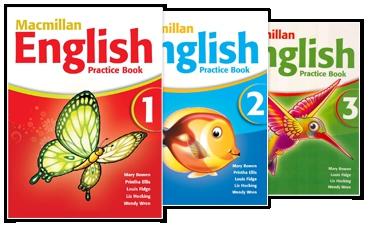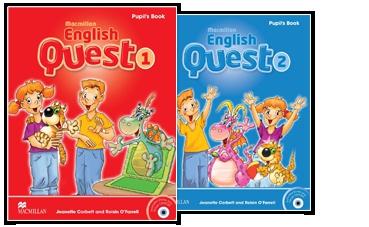












In this unit we will start by considering the material available for use in the classroom and how this material can be put into our lesson planning.
We will then look at sourcing this material both in written and electronic form. The most efficient use of this material will come about in a well-ordered classroom, so we will look at ways of maintaining order and discipline during our activities.
The final section is a list of useful web sites you can visit to obtain free resources to use in the classroom.


This unit explores the types of material that we can use in the classroom, but first we should define what we mean by ‘materials’.
Materials are anything we bring with us to the classroom to aid the teaching process.
Therefore this will include:
n Worksheets, to be given to the students for practising
n Communicative activity sheets, for using the language in more realistic situations
n Pictures, flashcards, drawings, charts, and other visual aids
n Tapes, recordings, and other audio aids
n Real objects (sometimes referred to as ‘realia’)
n A whole range of other material such as, comics, magazines, T.V clips, video etc.
n Course books.
All of these materials fit into two general classifications: authentic and non-authentic.
Authentic materials are those materials that have been produced for a real purpose and not for the classroom.
Non-Authentic materials are those materials that have been produced, either by an educational company or individual teachers for the specific purpose of being a teaching aid.
This distinction can become a little hazy for young learner materials. If you consider a children's T.V. program such as Sesame Street, or alphabet flashcards designed for English-speaking children learning to read as examples they could be difficult to categorize from a TEFL perspective.

There are many advantages to using authentic materials in the classroom. For example:
n They are real and therefore students are pleased to have realistic examples to work from especially if they see it is from another country, for example a U.K. magazine.
n They are less predictable than examples created for specific teaching purposes.
Both of these are advantages for the students but there are advantages for the teacher as well.
We have already mentioned the advantages of using authentic materials for our students and we should keep these in mind when designing our materials for the classroom. In essence, we should try wherever possible to make our materials as authentic as we can. This may sound a little strange but your efforts will be rewarded.
Before designing materials for the classroom, you need to have a very clear idea of these areas:
(i) What language they are trying to test or use.
(ii) How they are going to be used in the classroom.
(iii) How you are going to show how to use them.
If you consider these points at the start of the design process, you will find that creating the materials is much easier and they will be more effective in use.
Let's look at each of these points in turn:
(i) Basically this refers to the teaching point. This may be the written or spoken vocabulary, the written or spoken grammar point, a reading activity or a listening activity Depending upon what stage we are at in our lesson (see lesson planning 3.3) our materials need different considerations.
If using the Engage, Study Activate (ESA) methodology, a study phase activity will tend to focus on an individual teaching point that has been studied that day, in a very structured format. An activate phase activity tries to get the students to use their cumulative knowledge, having been given much less structure to work with.

(ii) This refers to the actual mechanics of their use in the classroom.
n How are you going to organize the students to complete the activities?
n Will you use pair work, small groups or large groups?
n How will you ensure that everyone is active, during the activity, during feedback?
n How will you monitor the activity to ensure the students are doing as expected?
n What will you do if the activity doesn’t work?
All of these points need to be considered before you start to put the materials together, as it's too late once the activity has started.
(iii) You cannot just give an activity sheet to students and expect them to complete it. These points are very important:
n They have to know what to expect and to have seen a physical representation of the activity before they start.
n Do not try to explain the activity, demonstrate it. For a worksheet type activity, this simply means doing an example (of the same type) on the board.
n Elicit (i.e. get the students to give you) a correct answer from the group to check understanding and do all of this before any material is given out.
n For longer communicative activities, do the activity with a student (who will understand it) to show the group how it works. For example, if it’s a game, then play it while the group observes.
n Always check understanding before you start by asking students what they are going to do.
n Bear in mind that the “Do you understand?” question is largely redundant, as it doesn’t tell you anything real about their understanding.


The following discussion of lesson planning will assume the EP or ESA methodology is being used, but t h e p o i n t s r a i s e d a r e c o m m o n to o t h e r methodologies.
Again we will start by outlining a number of questions.
n Why create a lesson plan?
n What should be on it?
n How do I use it?
A lesson plan is a working document. If in doubt, think of it like this: If just before you walked into the classroom you felt violently ill and couldn't teach, you may need someone else to take your lesson. You should be able to hand your plan (and materials) to someone else who could effectively carry out your lesson. Considering a lesson plan in this way helps to consider the level of detail we need on any such plan. A lesson plan tells us what should happen throughout the lesson in a series of stages. Bear in mind that it is also an historical document it can therefore be used to show what the students have covered and when they covered it.
From the above we can think about the actual components needed on the plan. For example it will be useful to know the date and time of lesson, the level, the room, the expected number of students, the context of the lesson (vocabulary or grammar point), the objectives (what the students can do after the lesson), anticipated problems for the students and teacher (with solutions) and an outline of the procedure of the lesson, giving additional information such as timings, etc.
See the example lesson plan, followed by a blank form you can print out and use, on the next three pages.
Always bear in mind that a lesson plan is just that – a plan. You cannot work through your plan regardless of what is happening in the lesson. Student understanding determines what happens in the lesson and not the plan. It is useful to have a copy of your plan in the lesson so that you can refer to it at intervals, to make sure you have covered all the points you were expecting to.
Lesson Plan

Class level: Elementary
Language point: Use of comparative adjectives
Teaching aids: White board, worksheets, Activate activity
Learner objectives: At the end of the lesson students should be able to read a story involving comparative adjectives.
Anticipated problems for students: Understanding the concept of comparative adjectives.
Solutions: Effective, visual examples in the Practice phase.
Teacher: Charlie Smith Procedure
Draw a blob diagram of an animal on the board.
Personal aims: Improve my board work; involve all students.
Anticipated problems for teacher: Getting everyone in the class involved in all activities.
Solutions: ake activities fun by maintaining my enthusiasm. M
Ask for ideas for what they think it might be, and encourage the students to spell the animals as they suggest them.
Cover all the story animals.
Mime the story animals, or encourage the stronger students to do so, allowing approx 15 seconds for each animal.
Put the table headings on the board.
Ask students to complete the table with appropriate (or deliberately inappropriate) adjectives.
Gap-fill sentences for the comparative adjectives.
Read the story through once, then elicit the animals from the story with the adjectives, listing them on the board.
Read the story again, stopping to allow the students to fill the gaps chorally as a class.
Arrange the students into groups of 4, and give them tasks.
Students re-tell the story in their groups, and practice for 5 minutes.
Groups then present their stories to the class.

Teaching aids: Learner objectives: For the students to be able to
Anticipated problems for students: Anticipated problems for teacher:



You will find a whole range of books that cater for the teaching of young learners and as with all things their usefulness varies.
Whichever resources you decide to use always bear in mind that they will have been written for a market (typically Western European) and therefore you will need to adapt the suggested activities and worksheets to suit your particular situation in terms of culture, grouping, etc.

Course books usually consist of a set of materials:
n Students book (for classroom use)

n Workbook (for individual and supplementary work, class work, homework etc)
n Cassettes/CDs (for use in class and at home)
n Teacher’s book (gives a step-by-step guide as to how to teach the material in the student’s book. Often also contain progress tests)
n In some cases a video (video activities to reinforce the material in the student’s book)
n Other published materials include – reading books graded to varying levels of students, test books, learner dictionaries, vocabulary flash cards, etc.

Course book advantages
n It is usually expected by the students.
n Although not all materials may be suitable for your class, it is considerably easier and less time-consuming to supplement than to design a syllabus and create materials from scratch.
n It provides a syllabus which is graded to a level suitable for the students, and a balanced mix of grammar, vocabulary and skills work.
n It provides security for both students and teachers.
n It offers continuity and progression.
n The materials will have normally been tried and tested before publication.
n It is usually attractive and appealing to the eye.
n It continually practices language items previously introduced.
n The teacher’s book offers many good ideas for the inexperienced teacher
Course book disadvantages
n It does not always fit the specific needs and interests of all the class members, and some students may not like the book so might be reluctant to use it.
n Exclusive use of a course book can become very predictable and boring for the students.
n It can make teachers lazy, and stop them from being creative and searching for activities and materials which will motivate and interest their students
n A course book is almost always a compromise.
n Most course books are designed for use by all nationalities and may not cover in enough depth language problems specific to the nationality of students that you are teaching.
n Teachers rarely get to choose the course book and many can be outdated and unattractive to your students.
n Course books dictate what is to be taught. This can stop teachers analyzing particular problems that their students may have and prevent the lessons from being student-centered.

n If you have the choice of course book, look at a range that could be used for your group. Which is the most suitable?
n Do not use the course book for the whole lesson.
n When planning your lessons think about which items will motivate your students, and which need to be supplemented/adapted/replaced.
n Consider about how much time will be needed for each task and create a balanced lesson.
n Explore ways to match the book to the needs of the students.
n Approach the book critically: Read the teacher’s book, but also do your own research into the language, and look for difficulties not highlighted by the authors.
n Don’t base all lessons around the course book Look at what your particular students need too.
n Don’t regard the course book as the solution to everything. Try out new ideas and vary your activities.
Four different options for course book use
1.Omit. Teachers may decide to omit certain lessons from the course book if they are not beneficial or relevant to their students. Care is needed though, because if the teacher omits too much, then the students might wonder why they bought the book in the first place!
2.Replace. Instead of omitting unsuitable material the teacher may choose to replace it with similar, but more appropriate, material.
3.Supplement. At times the teacher might want to add extra material to the course book to reinforce a language point, or to extend the students’ engagement with the language.
4.Adapt. This is where the teacher will use the same basic materials but in his/her own way and style.
n Course book titles
Refer to the appendix on page 21 of this unit for a list of possible course books designed for young learners. Please note that the list is by no means exhaustive and many alternatives are available.


There is now a wealth of material available on the Internet for teachers of young learners. The Internet provides two major teaching resources:
(i) You can use it to find material and information for your own planning and development purposes.
(ii) You can direct your students to various sites on it.
This will probably have to be done outside the classroom environment, unless you are fortunate enough to have a computer suite available to you and the students in your school.
You do need to be careful when choosing material from this resource. There are many sites that suggest downloading their supposedly "free" resources, which turn out to be anything but free. Look for sites that are designated 'freeware', which typically do not require you to log in or register your name.
Equally, some sites that appear to be paid only also have a free option, so it’s always worth checking.
Most sites tend to differentiate between areas meant for teacher resources and those for students. Be careful if you are using information from websites that students will use for project/assignment work Can your students easily gain access to the site and thereby get all the information they need?
On page 16 of this unit, we provide a webliography that has some useful sites you can use as resources for teaching as a foreign language to young learners.
We recommend this site to check out copyright issues:
http://cla.co.uk
Also you need to be aware when directing students to the Internet, that there are many sites which are entirely unsuitable for your students to access. It would therefore be sensible to keep references of all suggested sites you have directed your students to and to check out any links those sites have available (just in case!).
Happy surfing!


Your own school experience may well have included classes that we can categorize as follows:
1 Rigid teacher control – students spoke only in response to teacher questions.
2. Little to no teacher control – students did what they wanted.
3. Controlled active – students spoke actively when directed to do so and listened when appropriate.
These three lesson types are part of a continuous scale and there will have been many experiences in between.
Which of these creates the best learning environment?
A seminal work in this regard is Teaching Styles and Pupil Progress by Neville S. Bennett, 1976 (Harvard University Press). In his book, Bennett describes three main teaching styles which relate to our first three examples. Perhaps surprisingly, the conclusion is that students learn despite their teacher's style.
There is no ‘best’ method, however There are too many independent variables at work to be able to say, “Teach like this and it will all work out fine”.
Your teaching style should be flexible and adapt to the situation you find yourself in. Students will respond to your demeanor; how you present yourself is the single most important factor to maintaining order in the classroom.
You have a number of tools at your disposal for maintaining order, all of which can play their part:
Voice, gesture, eye contact, grouping students, using their names, classroom arrangement, teacher position, giving attention, monitoring and feedback, giving clear and concise instructions and knowing your students are just some, which are discussed in more detail on the next page.

The pitch, volume and tone of your voice are all useful for indicating to the students your displeasure at a form of behavior
Simply raising your finger to your mouth while shaking your head can be a non verbal way of controlling errant talking.
Direct eye contact with a student is a very quick and easy way to stop them doing what they shouldn't. Only the boldest of students will misbehave whilst staring at you!
Moving students on a regular basis, so they don't form 'cliques'.
Calling someone by their name personalizes the classroom and lets the students know that you know who they are. If they think they are anonymous, they are more likely to misbehave.
Make sure all the students are in view at all times.
Make sure they know you can see them at all times, so don't put your desk/chair behind a big plant, for example.
Don't allow attention seekers to take up all your time.
Ensure all activities are constantly monitored, and always get feedback on the activities.
Make them clear and simple and check for understanding before starting, not knowing what to do can cause students to misbehave.
This is one of the best lines of defense, as knowing what they are interested in and being able to effect whether they can do it or not is very powerful.

It would be misguided to think that you could get through a career in teaching without ever encountering discipline problems. However some teachers do have more problems than others.
Experience has shown us that there are some common traits amongst those teachers who have more problems with their students.
This is our top ten things to avoid:
n Not giving students respect
n Having favorites
n Shouting as a first response to bad behavior
n Making threats and not carrying them through
n Not being seen to be fair
n Lack of interest in students
n Poor preparation
n Bluffing about knowledge
n Being over-friendly before getting to know the students
n Changing the class rules continuously
There are obviously many more!
So what can you do if there are problems?
First you need to familiarize yourself with the schools disciplinary procedures. If you act outside of these you may end up in more trouble than the students were creating.
If you are going to punish them, then the punishment should be commensurate with the offense and should never be preferable to the activity you are taking them away from.
At school the author was often sent outside to pick up litter, which was always excellent as he could hide behind the sheds and have a cigarette.
Bear in mind that your reactions to problem behavior will go a long way to determining whether there will be a repetition of it. Experience shows that losing your temper, shouting, or focussing your anger on the student rather than the behaviour are all negative in terms of trying to maintain order


The following resources are presented for your information only and inclusion (or omission) does not represent our recommendation.
www.cambridge.org/esl
www.pearson.com
https://eslkidsdownload.com
www.oup.com
http://iteslj.org/
www.english-zone.com
www.teflgames.com/games.html
www.esl4kids.net
http://a4esl.org/
www.bogglesworldesl.com
www.baamboozle.com/games
Bear in mind that websites come and go on a regular basis, so it’s possible that not all sites listed above will be current. Having said that, if anything here doesn’t work please let us know, and we’ll endeavor to find an alternative.

Check your knowledge before attempting the unit test.
Please note that this task sheet is solely for checking that you have understood the course unit content. You do not need to submit this task sheet – just use it to check you have understood the major points.
Note: not all the information needed for the answers can be found in the unit, so you may need to do further research from other sources.
Task 1 – Complete the table below with examples:
Advantages for the student
Advantages for the teacher
Disadvantages for the student
Disadvantages for the teacher

Task 2 –
Using the internet find three websites that offer free worksheets for teaching 6 year olds to 10 year olds.
Give the website references, and the activities they practice.
(i)
(ii)
(iii)
Task 3 –
Using one of the sites suggested above, find two activities suitable for teaching 6 year olds color vocabulary, and explain them in detail.

Task 4 – Write a detailed ESA (engage, study, activate) lesson plan to teach furniture and rooms in a house to a class of 20 eight year-olds.
Class level:
Language point:
Teaching aids: Learner objectives: For the students to be able to
Anticipated problems for students:
Solutions:
Teacher: Procedure Phase
Anticipated problems for teacher:
Solutions: Personal aims:


Course books are a very emotive issue for many teachers. Some teachers swear by them, while other teachers avoid using them. Almost every published course book has its fans and its detractors. The choice
of whether or not to use a course book, and if so, which one, can be quite complex. The table below shows a selection of the course books that are available for teaching English to young learners from a variety of different publishers.
A1-B1 etc. = Language levels from the Common European Framework of Reference for Languages (CEFR);
BrE = British English; AmE = American English; YLE = Cambridge English: Young Learners
Oxford University Press
Kindergarten
First Friend Show and Tell
Little Friends
Let's Begin
Primary Family and Friends (Pre A1-B2.1)
Oxford Discover (Pre A1 - B2.1)
Get Ready for … (A1 to A2)
Explorers (A1 to B1)
Incredible English (BrE)
Let's Go (AmE)
Secondary Scope (A1 – B2), Get Ahead (A1 – B1)
Pearson ELT
Kindergarten
Big English (BrE & AmE)
Primary
Backpack (BrE & AmE editions)
Superkids
Secondary
Activate (A2 – B2),
Next Move (A1 to B1)
Real Life (A1 – C1)
Garnet Education
Kindergarten
Sunshine Gold
Primary
Gateway Gold (A1–B1)
Cambridge University Press
Kindergarten
Super Safari (BrE & AmE)
Primary
The English Ladder(A1)
Super Minds(A1 – B1)
Fun for Starters, Movers and Flyers (A1 – A2)
Secondary
Cambridge English Prepare! (BrE, A1 – B2)
Eyes Open (BrE, A1 – B1)
Uncover(AmE, A1 – B1)
MORE! (BrE & AmE editions, A1 – B1)
MM Publications
Kindergarten
Yippee! (BrE & AmE editions, Pre A1 – A1)
Hi Kids (BrE & AmE editions, Pre A1 – A1)
Primary
Young Stars (BrE, A1 – A2)
Get Smart (BrE & AmE editions, A1 – A2)
Secondary
Full Blast (BrE & AmE editions, A1 – B2)
Pioneer (BrE & AmE, A1 – C1)
Collins ELT
Kindergarten & Primary
Collins First English Words
Collins English Club)
Macmillan Kindergarten
Bebop
Best Buddies Hula Hoop
Primary Grammar Goals (BrE & AmE editions)
Brainwave (AmE)
English World
Secondary Gateway (BrE)
American Inspiration Insights (BrE & AmE)
DELTA Publishing
Primary
Super Starters (YLE, pre-A1)
Mighty Movers (YLE, A1)
Fantastic Flyers (YLE, A2)
Helbling Languages
Kindergarten
Hooray! Let's play! (A1)
Secondary
Get Real (A1-B2)
Talking Culture (A1 – A2)